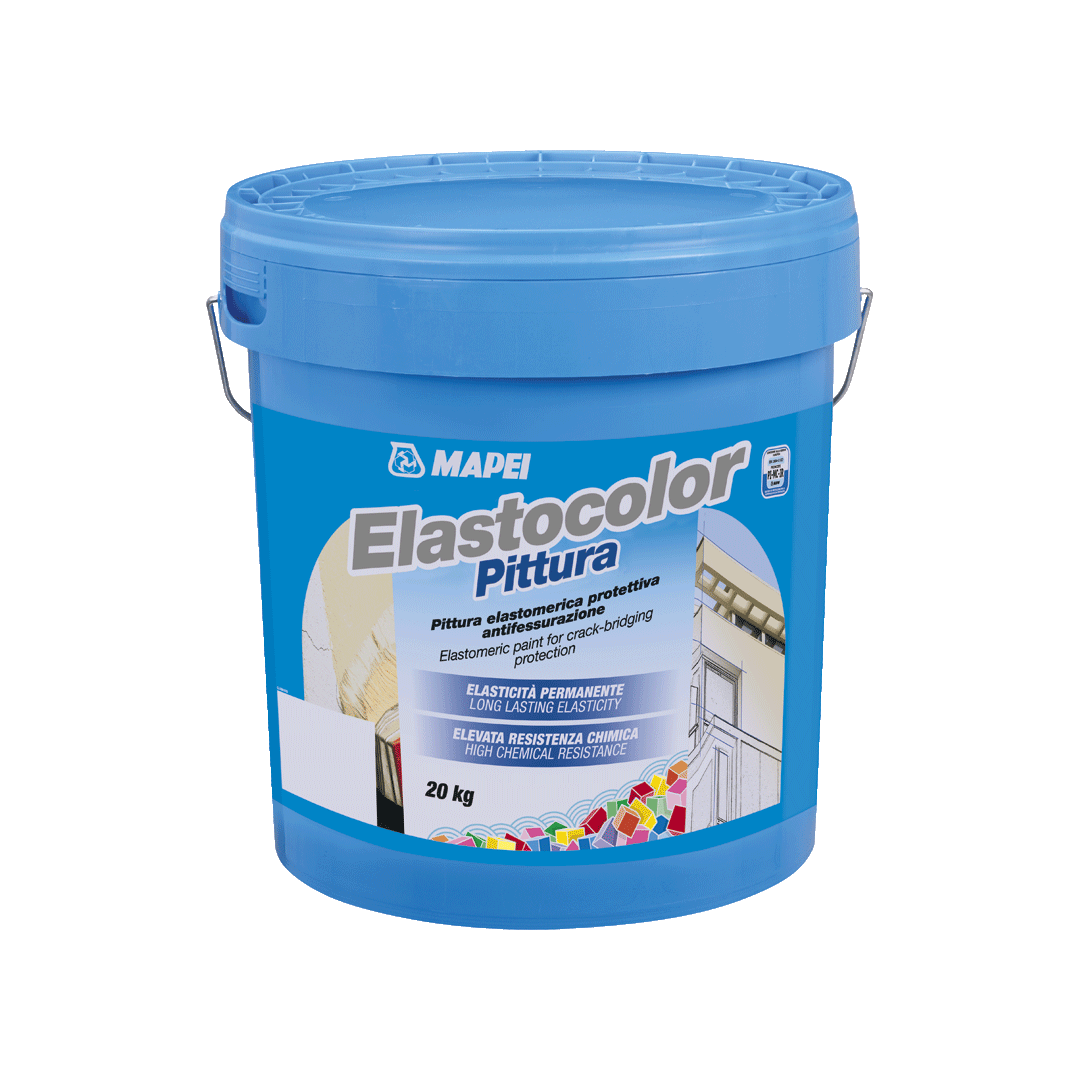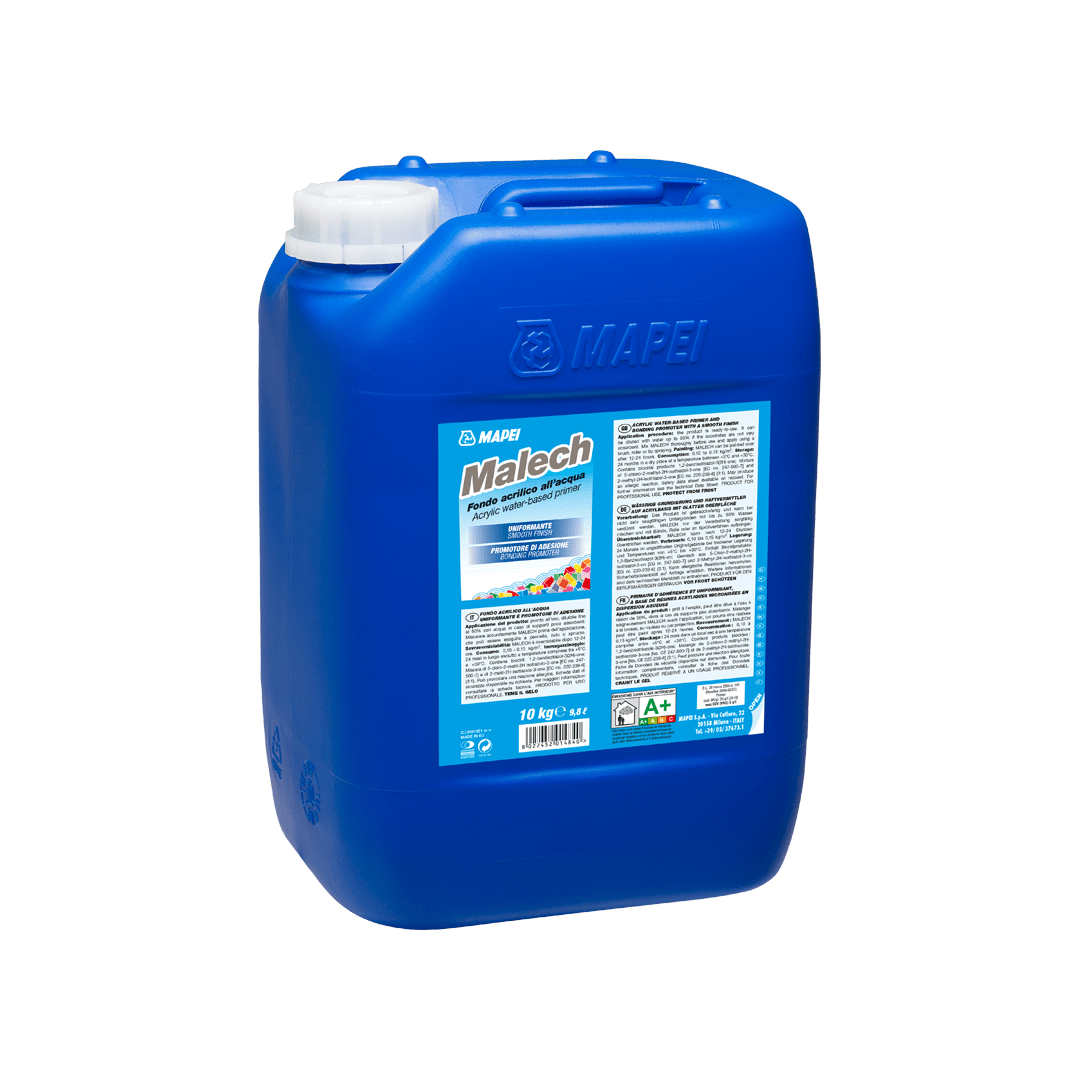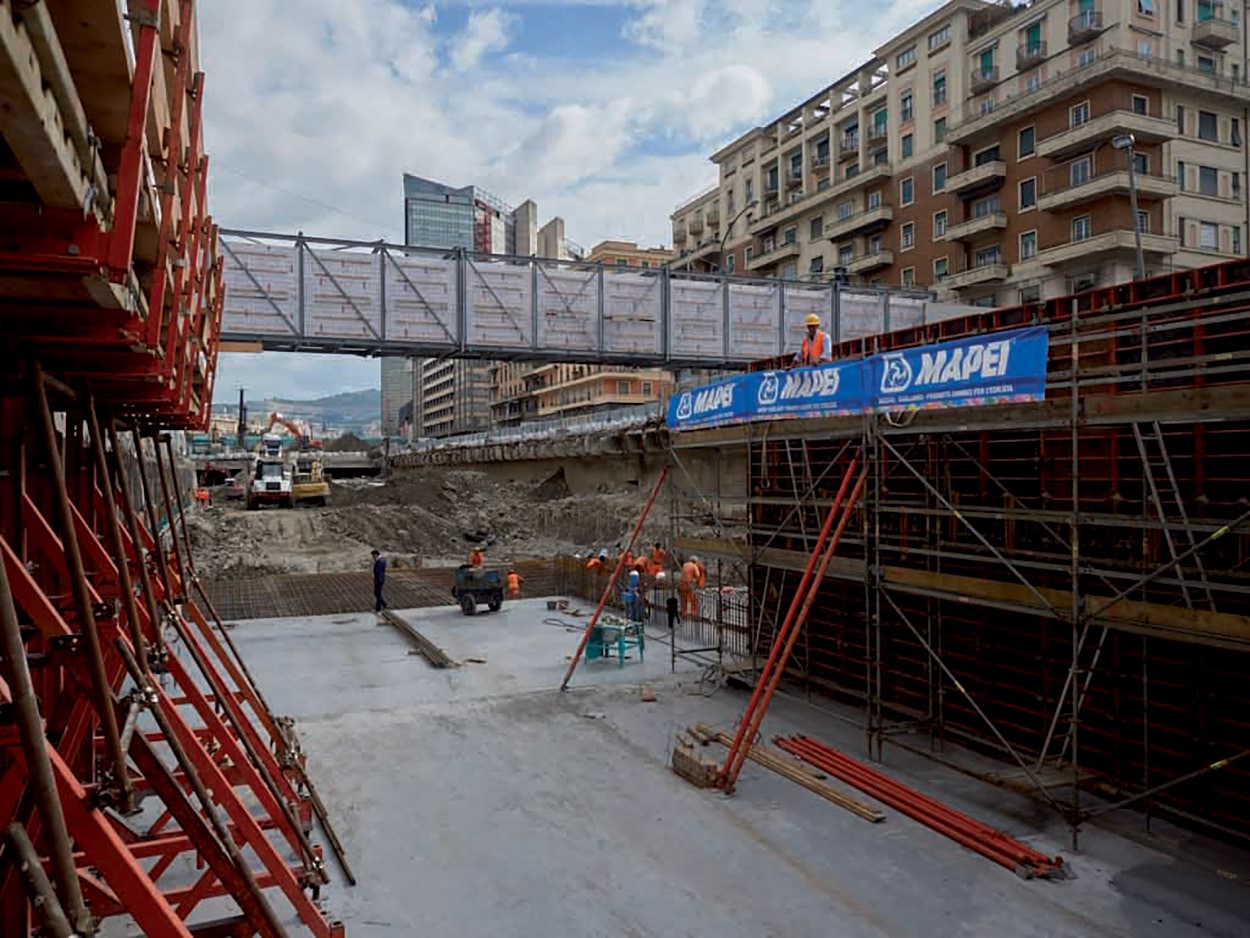
Bisagno Stream in Genova (Italy)
Around 3,600 anodes to protect the steel reinforcement in the abutments and longitudinal cavity walls of the Bisagno Stream, one of the most important watercourses in Genova.
Mapei engineering department was involved in the project and proposed two types of product to help protect the concrete structure and give it extra strength: MAPESHIELD I was placed on one side, pure zinc anodes with a coating of special conductive paste to maintain their service life over the years, and on the other side a coat of elastomeric ELASTOCOLOR PAINT and MALECH adhesion promoter, for an attractive and durable finish.
Making the stream safe by widening the section of its bed and preventing corrosion of the reinforcement rods.
After almost three years of work the upgraded Bisagno Stream, which flows lengthways through the city of Genova and cuts it in two, had been equipped with new safety features before being handed back to the city in January 2018. Work included the completion of a 200 m long channel along the stream for a cost of around 24.7 million Euros.
The work proved to be highly complex and had to be carried out in complete safety: in fact, the end part of the stream flows through a densely populated area with a highly frequented railway hub. The work was carried out in 3 separate stages and the traffic routes had to be modified 21 times.
The work was carried out by ATI-CSI (Consorzio Stabile per le Infrastrutture), SIRCE SpA, VIPP Lavori Speciali Srl and Trecolli SpA, and included the completion of work on the road going over the stream and increasing the stream’s capacity to handle run-off water. The road going over the stream was also upgraded to withstand loads and to improve the flow of traffic.
To obtain these results, ATI enlarged the hydraulic section of the stream by lowering the bed of the stream and reducing the thickness of the road deck, while maintaining the existing banks of the stream by increasing the section of the structural elements and reconstructing the internal cavity walls and the road over the stream.
The service areas were also reorganised, which included building tunnels for the various service equipment and new crossways inside the road deck.
Going into detail, work also included demolition of the old decking dating back to the 1930’s, lowering the current level of the bed of the stream by around 2 m, building footings under the existing banks of the stream and building a new road deck, all in compliance with the latest norms and standards, including norms covering seismic upgrading interventions.
Thanks to the work carried out, the capacity of the stream was increased from 450 m3/s to 850 m3/s with a free-board (the gap between the surface of the water and the underside of the road deck) of 1 m.
MAPESHIELD: GALVANIC CATHODIC PROTECTION FOR THE REINFORCEMENT RODS
Around 20 specialised building companies took part in the work, including Mapei, with a workforce of more than 250 people.
Once demolition work was under way on the foundation slab of the road over the stream on the west bank, jet grouting and preparation work on the new foundation slab could commence. The new bearing walls for the new road over the stream were then built.
To protect the reinforced concrete abutments and bearing walls as prescribed in the technical specification, galvanic cathodic protection was ensured by using MAPESHIELD I 30/20.
MAPESHIELD I is a solution developed by Mapei to protect reinforcement rods in repaired reinforced concrete structures against corrosion. It also offers a number of advantages if it is used to prevent corrosion in new reinforced concrete structures, particularly those that will be coming into contact with aggressive agents.
The area worked on in this phase was the first band of concrete around 2 m high from the bed of the stream. Three anodes were placed every metre along the abutments at a pitch of 0.7 m in a vertical direction.
MAPEI PAINT ON THE REINFORCED CONCRETE
Along the dividing walls, on the other hand, three anodes were positioned every 0.9 m, again at a vertical pitch of 0.7 m. In total, around 3,600 anodes were installed.
The new reinforced concrete structures were further protected by applying a specific Mapei coloured coating. Once the surfaces had been cleaned and checked to make sure they were sound, they were initially treated with the bonding promoter MALECH, an acrylic, water-based primer, and then painted with ELASTOCOLOR PAINT, an elastomeric paint for crack-bridging protection of internal and external surfaces, with long-lasting elasticity and high resistance to chemicals.





.jpg?sfvrsn=b0fe6275_6)


.jpg?sfvrsn=b2fe6275_6)



.jpg?sfvrsn=c1fe6275_6)
